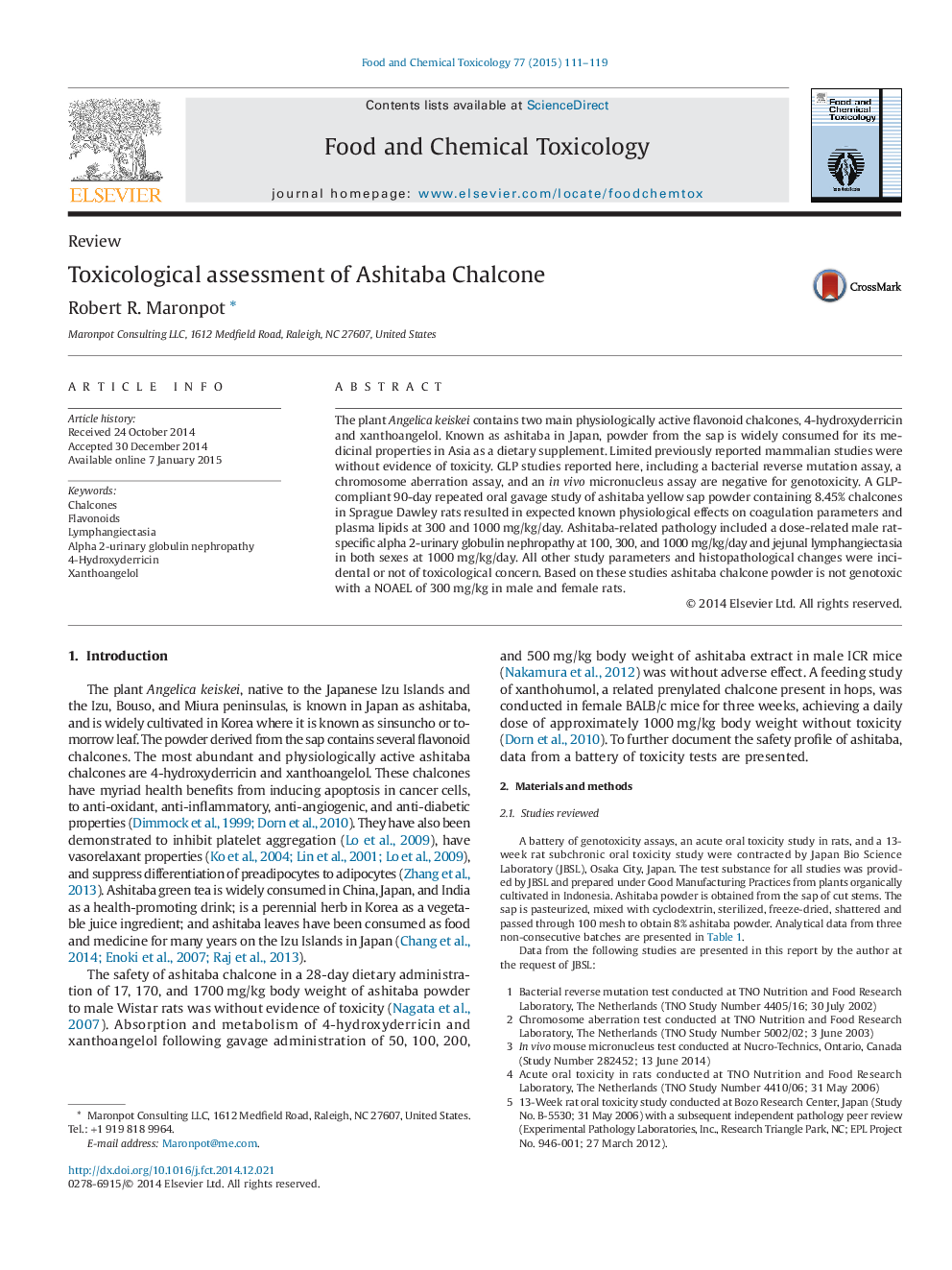| کد مقاله | کد نشریه | سال انتشار | مقاله انگلیسی | نسخه تمام متن |
|---|---|---|---|---|
| 2584953 | 1561767 | 2015 | 9 صفحه PDF | دانلود رایگان |
• Ashitaba sap is a consumed plant extract with medicinal properties.
• Negative in vitro and in vivo genotoxicity and low mammalian subchronic toxicity.
• Associated with dose–response male rat specific alpha 2u globulin nephropathy.
• Highest dose associated with intestinal lymphangiectasia.
The plant Angelica keiskei contains two main physiologically active flavonoid chalcones, 4-hydroxyderricin and xanthoangelol. Known as ashitaba in Japan, powder from the sap is widely consumed for its medicinal properties in Asia as a dietary supplement. Limited previously reported mammalian studies were without evidence of toxicity. GLP studies reported here, including a bacterial reverse mutation assay, a chromosome aberration assay, and an in vivo micronucleus assay are negative for genotoxicity. A GLP- compliant 90-day repeated oral gavage study of ashitaba yellow sap powder containing 8.45% chalcones in Sprague Dawley rats resulted in expected known physiological effects on coagulation parameters and plasma lipids at 300 and 1000 mg/kg/day. Ashitaba-related pathology included a dose-related male rat-specific alpha 2-urinary globulin nephropathy at 100, 300, and 1000 mg/kg/day and jejunal lymphangiectasia in both sexes at 1000 mg/kg/day. All other study parameters and histopathological changes were incidental or not of toxicological concern. Based on these studies ashitaba chalcone powder is not genotoxic with a NOAEL of 300 mg/kg in male and female rats.
Journal: Food and Chemical Toxicology - Volume 77, March 2015, Pages 111–119
